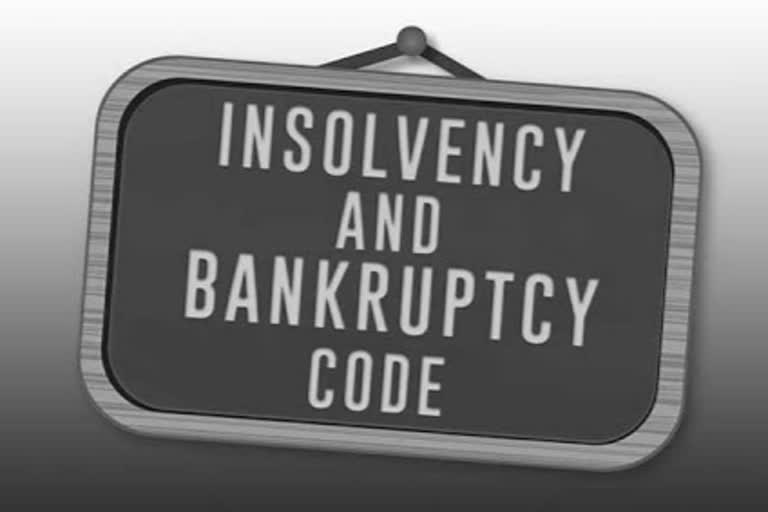New Delhi: Early this week, the Lok Sabha approved the Insolvency and Bankruptcy Code (Second Amendment) Bill, 2020, which seeks to insulate those companies that are facing difficulty due to the adverse economic impact of COVID-19 global pandemic.
The primary purpose of the fresh amendments in the bill was to temporarily suspend section 7, 9 and 10 of the Act to prevent the initiation of the Corporate Insolvency Resolution Process (CIRP) so that the companies affected by COVID-19 can recover from difficulty.
The debate in the Lok Sabha also provided a snapshot of the performance of IBC over other debt recovery and resolution processes such as Lok Adalats, Debt Recovery Tribunals and the proceedings under the Securitisation and Reconstruction of Financial Assets and Enforcement of Security Interest Act, 2002 (SARFAESI).
Read:| India rejects proposal to allow free flow of data outside the country
In her response to the queries raised by the opposition members, Finance Minister Nirmala Sitharaman said with an average 42.5 per cent recovery rate, the performance of IBC was far better than other recovery methods such as Lok Adalats, Debt Recovery Tribunals and court proceedings under the SARFAESI Act.
Strike Rate: Lok Adalats vs DRT vs SARFAESI vs IBC
According to the latest official data shared by the Finance Minister Nirmala Sitharaman in the Lok Sabha, resolution process under the IBC has the highest recovery rate with regards to other resolution and recovery methods such as Lok Adalats, Debt Recovery Tribunals and cases initiated under Securitisation and Reconstruction of Financial Assets Act.
According to the provisional numbers for the financial year 2018-19, over 40 lakh cases were referred to Lok Adalats and an amount of Rs 2,816 crore was recovered, with a recovery rate of just 5.3 per cent.
Read:| Aadhaar based registration of migrant workers on self-declaration basis
In the case of the Debt Recovery Tribunals (DRTs), over 2.52 lakh cases were referred to them and an amount of Rs 10,574 crore was recovered, a recovery of just 3.5 per cent only.
In SARFAESI, the number of cases referred was over 2.48 lakh involving an amount of Rs 2.89 lakh crores. As against this, an amount of Rs 41,876 crore was recovered, a recovery rate of 14.5 per cent only.
Nirmala Sitharaman said against this, the IBC has an average recovery rate of 42.5 per cent.
IBC compressed resolution time to one fourth
Unlike court cases to resolve a financial crisis or liquidation dispute where the matter drags on for years, the Insolvency and Banking Code (IBC) not only has provision for time-bound resolution but it is often able to resolve a crisis within time.
According to the IBC law, the resolution process for a crisis should be complete within 180 days, which is extendable by another 90 days and in any case, it should be complete within 330 days, including the time consumed in court cases.
Finance Minister Nirmala Sitharaman told Lok Sabha that the average time taken under the IBC resolution was 380 days, excluding time consumed in court litigation whereas, on an average, the court cases took more than four years to resolve a financial case.
IBC has the highest recovery rate
According to the latest official data shared by the Finance Minister in the Lok Sabha, compared to other methods like BRT and SARFAESI, a Corporate Insolvency Resolution Process (CIRP) under the IBC has touched a recovery rate of over 70 per cent in 2019.
Read:| 13 times RS Dy Chairman asked MPs to allow division of votes: Venkaiah
“Our recovery rate in 2016 was 26 per cent. In 2017, within one year of this law coming in, it was 26.4 per cent. In 2018, it was 26.5 per cent and in 2019, it was 71.6 per cent. That is why our ranking (ease of doing business ranking) improved,” Nirmala Sitharaman told the Lok Sabha.
IBC succeeded in reviving defunct companies
Talking about the performance of the IBC law, the Finance Minister informed the lower house that it has rescued about 258 companies till July 2020.
“Of the companies that were rescued, one-third were either totally sick or even defunct. Even defunct companies have been rescued,” Nirmala Sitharaman said.
Finance Minister said that the resolution process under the IBC resulted in the liquidation of 965 companies so far and nearly three-fourths of these companies were either sick or defunct when they entered the insolvency process.
Nirmala Sitharaman said that the companies, which had been rescued, had an asset value of Rs 96,000 crores, while the firms referred for liquidation, had asset values of Rs 38,000 crores when they were admitted into the CIRP.
“In value terms, 72 per cent of distressed assets have all been rescued,” she said.
Read:| Govt makes it difficult to route Chinese imports via ASEAN



